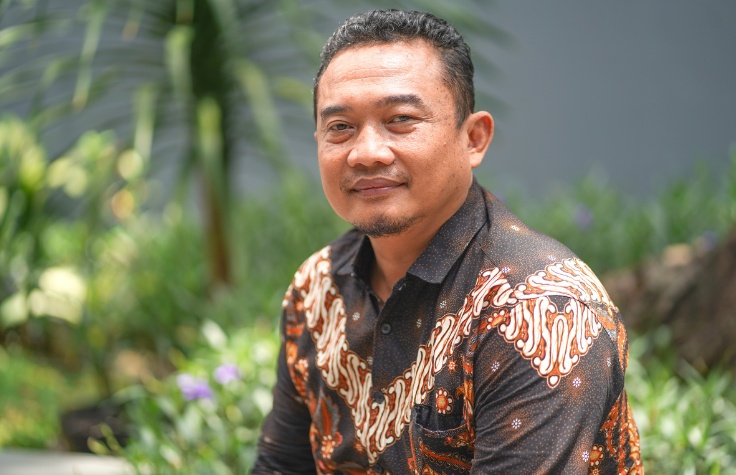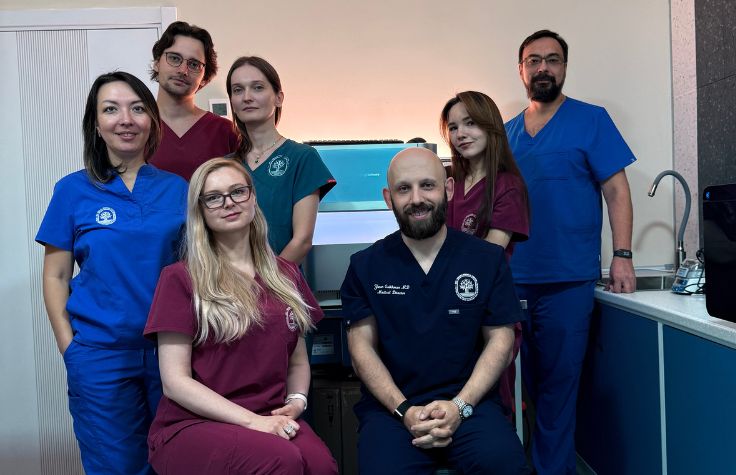
July 25, 2023
Nothing about Budi Hermawan’s experience with tuberculosis (TB) has been easy. In 2003, he had a cough. He didn’t think much of it, but as his symptoms worsened, he visited a doctor near his home in Bogor, Indonesia. He was diagnosed with TB and given medication, but eventually, he stopped taking the drugs.
Hermawan did not understand the disease or how important it was to continue his medicines. A few months later, his symptoms returned. He went back to the doctor, who strongly urged him to take all his medications. He did, but his disease continued to worsen.
“It was a long process, and I only had limited information,” says Hermawan. “It also affected my psychological and economic situation, as I was not able to work properly or be productive due to the disease.”
Finally, in 2010, his TB had worsened to the point where he was considering having a lung removed. This was an expensive proposition, and he had little money. Hermawan consulted with his family, and he took two months to raise the funds before he returned to the hospital. That delay proved fortuitous—a new treatment was now available and meant he would no longer need surgery.
The hospital tested Hermawan’s sputum (saliva and mucus) for multidrug-resistant tuberculosis (MDR-TB), a strain of the disease that is able to resist two of the most powerful anti-TB drugs, rifampicin and isoniazid. In those days, fast molecular tests were not available, and it took three months to get the results. Hermawan had to wear a mask the whole time to protect his family. Eventually, his results came back positive, and he was told to start treatment.
At the time, only one facility, Persahabatan Hospital in Jakarta, provided the treatment. Either he would have to commute via bus, train, and taxi four hours each day, or he would have to move to the capital.
For nearly two years, Hermawan took about 30 tablets a day, received daily injections, and went in for monthly exams. For the first four months, he moved to Jakarta to protect his family; then, once he was negative for TB, he moved back to Bogor—but the treatment continued for 17 months.
“It is extraordinary because the treatment is 21 months long and patients have to reconcile with the situation,” says Hermawan, whose story is unfortunately not uncommon. MDR-TB is more difficult and takes longer to treat than drug-susceptible TB. “Family support is very important, as well as support from fellow survivors.”
Supporting TB education and treatment
Hermawan’s experience inspired him to help others, and he joined a number of drug-resistant TB support groups, including Jakarta MDR-TB Fighters. Now he leads POP-TB Indonesia, which provides advocacy, education, and patient support.
This work is informed by his experiences. Hermawan thinks about the three-month period when he was waiting to learn whether he had MDR-TB and was a danger to his family and community.
Things are a bit better now. Some Indonesian clinics have adopted molecular tests, which can process results in as little as two hours. And on July 25, following the results of a Unitaid-FIND (Foundation for Innovative New Diagnostics) trial, the World Health Organization (WHO) announced its endorsement of next-generation sequencing for diagnostic testing of drug-resistant TB. This further expands drug resistant testing capability to get patients to the correct course of treatment faster. But even with this fast technology, infrastructure issues can slow the process.
“Theoretically, the results come out in two hours, but on the ground, the results come out in two weeks or even a month,” Hermawan says. “The human resource factor is very influential; they are not ready. There are conditions where the equipment is available but damaged. This is a challenge we face on the ground.”
And for patients, there are many layers to the experience: the social stigma, the difficulty accessing effective therapies, the economic hardships associated with the disease and even the treatments.
“We work to educate and motivate fellow survivors,” says Hermawan. “We can also advocate for patients because we have legal representatives. Currently, we have 36 representatives for POP-TB. Regarding mental health, we have 14 mental health responders for the hotline, and we also collaborate with psychologists.”
Hermawan used to meet individually with MDR-TB patients, but he realized that approach was unsustainable—there are just too many. He now leverages POP-TB’s resources to provide that necessary support, though he does occasionally intervene in person.
“There was a patient, a few months ago, who called me and told me she had nothing to eat,” he says. “This is terrible. TB medication must be accompanied by good nutrition. I ordered food for her and her family and the next morning my team and I found her. Her house was uninhabitable. I advocated for her, and she is being rehabilitated by philanthropic organizations. Before that she missed treatments; after she was never absent, and now she is cured.”
There’s a lot more work to be done. TB is the second-leading infectious disease killer worldwide, behind COVID-19. In 2022, WHO reported that globally, the number of adults and children receiving treatment for MDR- and rifampicin-resistant TB fell 43% short and 15% short, respectively, of United Nations five-year targets set in 2018. Hermawan is grateful to Illumina and other companies for their support, while noting that resources remain scarce and patients rely on POP-TB and other organizations to help them successfully complete their treatments.
“We have to convey information to the patient,” he says. “Sometimes, doctors will declare the patient cured, but they still have to continue treatment even though the microscope has no longer found germs. They have to continue in case there are dormant germs, and we help them understand this process so they are eventually cured.”
To read about tuberculosis surveillance, click here.
To read about a Mumbai lab using genomics for tuberculosis surveillance, click here.
To read about fighting drug-resistant tuberculosis in South Africa, click here.


